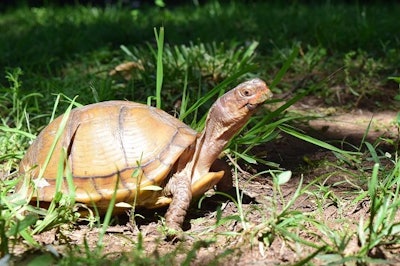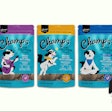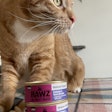
Whole prey diets are passé for reptile pets. Fresh, frozen snake food has been de rigueur for decades. Insect-based pet food is nothing new to owners of lizards. Overripe human-grade fruits have been upcycled into turtle food since before the term upcycled existed. While these established reptile food trends remain on the fringes of dog and cat foods, the twin dominant trends in mammal pet food aren’t as obvious in reptile food. Yet, premiumization and humanization influence reptile food too, just at a different level of the food chain.
Reptile pet premiumization expresses itself in the quality of the foods eaten by snakes’, lizards’ and crocodilians’ prey. For herbivorous reptiles, premiumization plays out in the fruits and vegetables fed to turtles and lizards, or used as ingredients to make pellets and other extruded diets and treats.
Humane treatment of prey animals as reptile food
Along with their diets, the quality of life for prey animals plays a major role in the premiumization of reptile food. Rats and mice serve as pets themselves, and many reptile owners want to know that prey rodents live as comfortably and hygienically as any pet before becoming food. The food eaten by those rats and mice ultimately becomes nutrition for the reptiles, likewise for the insects fed to smaller carnivorous reptiles. Any deficiencies or contamination in prey items’ diets gets passed on to pets.
For insect prey items, reptile pet owners use a process known as gut loading. This involves feeding a nutritious diet to the insects before giving them to pets. This ensures that the insects provide a wholesome range of proteins, carbohydrates and fats to the reptiles. Some vendors advertise that their insects have been gut-loaded before sale.
Feeding live gut-loaded black soldier fly larvae to a leopard geckos doesn’t tend to raise animal welfare red flags, but rodents can be more contentious. Reptile pet owners debate whether feeding pre-killed prey is natural, but few debate that it is both more humane for rodents and safer for reptile pets. Snake owners demand that those rodents died quick, painless deaths. In most cases, rodents are suffocated with carbon dioxide, which causes unconsciousness in less than a minute at high levels. Humans who have been knocked out by high concentrations of CO2 describe not feeling anything before they black out. While this makes the gas particularly risky for workers in dry ice plants, it means mice and rats can be killed quickly and presumably painlessly. The rodents can then be frozen and stored for sale by retailers. Numerous companies sell frozen, pre-killed rodents online, distributed through the mail. Those rodent companies differentiate by marketing the speed of delivery, cleanliness of production facilities, nutritional quality of the foods fed to prey and the prey’s quality of life.
Sausage for snakes and upcycled turtle food
For reptile owners who want to avoid looking pet food in the eyes, one company provides sausages for reptiles. Reptilinks makes sausages from whole animals, including bullfrogs, rabbits, quail and iguana. The company also makes a whole-prey sausages for dogs. There aren’t many other examples of carnivorous reptile foods designed to resemble human foods, unless you count animals like crickets that are eaten by people and reptiles.
Insects blur the line between reptile and human food, but fruits and vegetables cross right over that line. Many turtle or lizard owners feed their pets with produce from the grocery store. Some pamper their box turtles and bearded dragons with choice produce, but reptiles eat oddly shaped berries and over-ripe bananas with just as much gusto. Upcycling is nothing new for reptile owners.
Premiumization trends entered the reptile and other pet food markets largely because pet owners increasingly view animals as family on par with human members. However, humanization of pets isn’t as new of a trend as people tend to think. Since pre-history, people have assigned human attributes to animals and vice versa. Long before there was a web-slinger in New York or a dark knight in Gotham, there were Anansi the Spider-man in West Africa and Camazotz the Bat-man in Central America. The Pucá blurred the lines between human and animal in Ireland and other Celtic lands. Sobek, the crocodile-headed god of Egypt, blended human and reptile. Even in generally anti-serpent Christianity, Jesus compared himself to a snake in John 3:14-15, referring to Moses’ life-saving bronze snake on a staff from Exodus, leading to imagery of crucified serpents in medieval and renaissance art.
Humanization of reptile pets
Despite the historic humanization and deification of reptiles, the animals lack an essential characteristic to be fur babies. Nevertheless, pet owners do consider their cold-blooded pets with warmth. In a survey by Packaged Facts, 85% of “other pet” owners, a catch-all category that included reptile owners, considered their pets to family members, in the 2020 report “Reptile Products: U.S. Pet Market Trends and Opportunities.”
“The ‘reptiles as family’ trend further suggests new opportunities for premiumization along the lines of supplies ever more reminiscent of what a reptile would experience in the wild,” Packaged Facts analyst wrote.
Packaged Facts analysts noted that reptile pets’ take up less space in a home and therefore meet younger and urban pet owners demands for smaller pets. Food and other expenses for pets tend to be lower than those of dogs, cats and other warm-blooded pets. Economic considerations now have urgency as unprecedented unemployment weakens already ailing communities.
Humanization of reptile pets provides another step toward understanding the similarities among all living things. Reptile pets teach people what scientists observe as well: animals differ from humans by degrees, but not by kind. Similar nerve pathways fire in the brains of reptiles and humans, a point popularized by neuroscientist Paul MacLean, Ph.D., with the triune brain model. In that model, the reptile portion of our brains corresponds to the regions responsible for basic survival. Those behaviors consist of the four Fs: Feeding, Fleeing, Foraging and Fornicating.
Considering that feeding is one of those behaviors, the premiumization of reptile food along with other pet foods makes sense. The emotional state of a leopard gecko after finding plump, well-hydrated mealworms, may not be that different from a human gazing upon a properly stocked buffet.
Humanization of animals and premiumization of pet foods march together in lockstep, even for pets without legs.
















